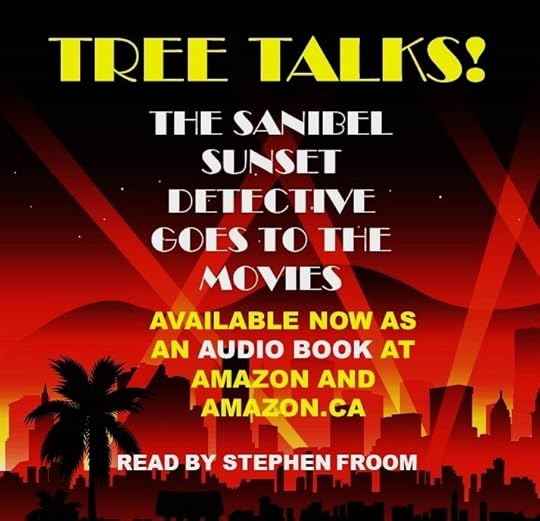Ron Base's Blog, page 3
December 30, 2023
Tree Talks: The Sanibel Sunset Detective Is Now an Audio Book on Amazon
December 8, 2023
The (Small)Triumph of King Lear
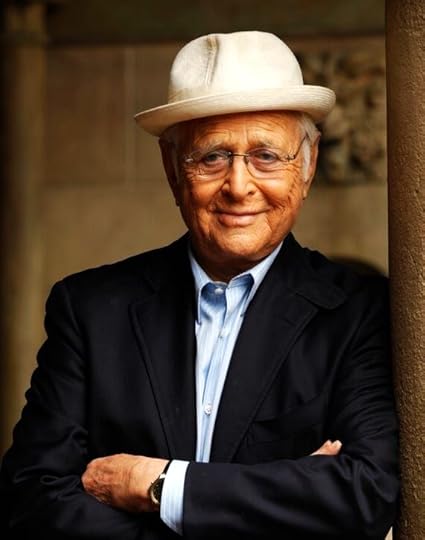
The guest host for the second show of the second season of NBC’s hit Saturday Night Live, was the king of network television, Norman Lear, who now has died at the age of 101.
Saturday Night Live (recently renamed from NBC’s Saturday Night) was full of young, newly anointed talents, including John Belushi, Dan Aykroyd, Gilda Radner, and Jane Curtin. Overnight, they had taken American television by storm with their irreverent brand of sketch comedy.
The Not Ready for Prime Time players, as the cast was known, were led by a whirling dervish of a Canadian named Lorne Michaels. He had stick-handled the show onto late night television and made it an unlikely, much talked-about success.
These were the new kids at the revolution. Norman Lear wandering around in his ubiquitous canvas porkpie hat and red sweater was by then somewhat old school, even though he had started a revolution of his own with such groundbreaking series as All in the Family and Maude.
The atmosphere around Studio 8-H was not particularly welcoming. All the attention over the past year had made the cast arrogant and standoffish. They certainly had little time for Lear, who, as rehearsals proceeded through the week, seemed very much a fish out of water. I felt the same way, but then I was doing a story on Michaels for Maclean’s magazine, yet another unwanted writer hanging around.
The dividing line between the old, represented by Lear, and the new of Lorne Michaels and his gang became apparent as the live telecast drew closer. Lear suddenly appeared with a video tape that had been recorded in Los Angeles by the stars of his shows.
Carroll O’Connor and Jean Stapleton from All in the Family, Bea Arthur from Maude, Sherman Hemsley of The Jeffersons, all appeared in praise of their boss’s brilliance. It was supposed to be funny—emphasis on supposed to be.
When the tape ended, there was silence in the room. Michaels finally said quietly that the piece was long. Lear said he thought it worked and wanted it aired as part of the show. Michaels didn’t say anything. Lear spoke up again, coldly insistent: A lot of people had gone to a great deal of trouble to make this tape. He would be embarrassed if it wasn’t shown.
The conflict remained unresolved as airtime approached. It was hard to tell what was going to happen. On the one hand, Michaels was so full of self-confidence, so sure of what he wanted—or didn’t want—that I could well imagine him shelving the tape. On the other hand, this was Norman Lear, faded a bit from his earlier successes, but still the king of television comedy.
On Saturday night, Lear stood before the studio audience and announced that a few of his friends had sent along a tape. He had prevailed over these young upstarts. It turned out to be a hollow victory. I had watched all week while Lorne Michaels made decisions that transformed what earlier seemed to be a funny show, into a second season misfire.
He was right about one thing, though: King Lear’s tape wasn’t funny.
November 25, 2023
The Rascal Exits
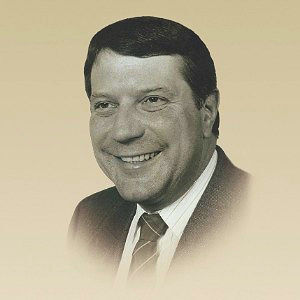
A week ago, some of Bob Meyer’s old pals at the Windsor Star gathered with him in his room at the Hotel Dieu Healthcare palliative care unit. We sat around for the afternoon swapping ancient myths and tall tales about a bygone era in newspapering that we were all part of.
Those were the days when the Star was a big, vibrant, hugely successful newspaper and the newsroom was choc-a-bloc with talented characters. No one was more of a character than Bob Meyer. He was, what your grandmother might have described as a bit of a rascal. He occupied his own desk at the Star, seemed to come and go as he pleased, and, to me at least, was an intriguing figure leaving the impression that he knew the score and where one might find the good times across the river in the wild west that was downtown Detroit.
I was nineteen years old, lonely, scared, managing to screw everything up, convinced that at any moment I was going to be fired. Bob was the seasoned pro who generously took me under his wing. Although I don’t think he ever reassured me that I wouldn’t get fired, he sure buoyed my spirits and gave me hope.
He also got me into a few places in Detroit that otherwise I might have missed. Every so often, I would look over and see Bob with that devilishly impish look he took on when we were about to get up to what, again, your grandmother might have defined as no good. Although, in retrospect, no good usually turned out to be pretty damned good.
I worshiped the guy back then, in awe of his talent as a reporter, the way he conducted himself, the aura of self-assurance he always carried with him. His friendship and support, the shoulder he provided for me to lean on, got me through those first days at the Star. I will be forever grateful to him. And no, I didn’t get fired.
All of that came flooding back as we sat with his strong, supportive and loving wife, Bev, and said goodbye to Bob. I took his hand in mine, told him how much I loved him—and, I swear this is true, for a brief moment, the rascal was back, giving me that devilishly impish look I remembered so well, and once again we were headed back across the river, up to no good…
Tears in my eyes.
 Bob and Bev Meyer
Bob and Bev Meyer
November 22, 2023
A Fleeting (Manufactured) Wisp of Glory: John. F. Kennedy 60 Years Later
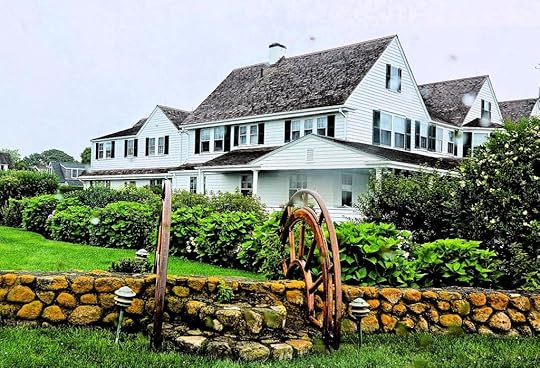
What universally came to be known as the Kennedy Compound in Hyannis Port is barely visible through early Sunday morning mist, and all these years later there is still a security guard present to shoo away nosy tourists.
It is eerily quiet in the prosperous neighborhood abutting the compound, a few dog walkers pass as you pause to contemplate the approaching 60th anniversary of the assassination of America’s thirty-fifth president, John F. Kennedy.

You know you are of a certain age if that November 22, 1963 date is indelibly imprinted in your DNA. I was closing my high school locker on that afternoon, having heard vague talk about the president being shot. The assistant principal, Mr. Grant, happened along. A pinched formal little man, I stopped him and asked if he’d heard that the president had been shot. “Yes,” he stated with an undertaker’s formality. “I believe that is the case.”
For a fifteen-year-old consumed by the glamorous aura surrounding John Kennedy, his wife Jacqueline, and their two children, this was a gut-wrenching moment, one that has stayed with me to this day.
I had bought into the idyllic Life magazine view of the Kennedys, a view that a few minutes away from the Kennedy Compound, the Kennedy Museum eagerly plays into: The handsome, confident young prince with the beautiful wife and the delightful children.
John Kennedy spent summers at Hyannis Port on Cape Cod and the museum displays dozens of photographs of Jack, as he was known around the Kennedy compound, mostly at sun-kissed play, sailing, playing golf, wrestling with the children.
All this had a bittersweet nostalgic effect on me as I made my way through the rooms, rekindling the childhood yearning produced by the Kennedy mystique that so permeated the popular culture at the time and even found its way to smalltown Canada.
Most of it wasn’t true, a cleverly constructed fable in an era when you could still get away with cleverly constructed fables; there was no fleeting wisp of glory called Camelot. The photos on display in the museum were largely staged by Life Magazine photographer Mark Shaw. Kennedy was hardly the family man portrayed in Shaw’s beautifully rendered pictures. The young prince of my childhood fantasies slept with Marilyn Monroe, shared a notorious gangster’s mistress, and, if investigative reporter Seymour Hersh is to be believed, hosted orgies in the White House swimming pool.
I’ve long known of these darker realities, but like so many of us from that generation, it remains difficult to give up completely on the myth. This summer at the Kennedy Museum, I had no trouble at all once again wallowing it, and today, on the sixtieth anniversary of his death, it lingers still—like the mist around the Kennedy compound.
I should know better, but as I drove away from Hyannis Port, those damned Lerner and Loewe lyrics that I memorized as a kid kept rattling around in my head: “That once there was a fleeting wisp of glory…”

October 22, 2023
‘Can’t Wait to See You’: Remembering Stephen Rubin

I was having dinner in a New York restaurant called Lilies when I found out Steve was dead.
We were supposed to dine together the following evening. Increasingly worried that I had not heard from him, I Googled his name. The first headline that popped up wasted no time letting me know what had happened: Stephen Rubin Dead. A book publishing legend, the obits said, responsible for the mega-selling The Da Vinci Code (something he had predicted would happen when his obituary was written) had died suddenly at the age of 81.
This was Monday night. Steve had died the previous Friday.
Sitting in a noisy restaurant, surrounded by happily chatting patrons, discovering that the friend you’ve known for nearly half a century is abruptly gone, leaves you bewildered, numb, and choked with disbelief: how could this be?
A month before, another Stephen, Stephen Silverman, another New York friend whom I had not seen in years and had planned a lunch with, another instance of worrying that I had not heard from him, only to discover through the internet that he had died. The irony of the two Stephens dying so unexpectedly as I visited New York for the first time in many years, was unimaginable. It could not possibly have happened, I kept telling myself.
And yet it had.
Where to start with my feelings about Steve? Love? Frustration? Admiration? Envy? A little bit of all those things. Overwhelmingly, love and admiration, that’s for certain—with a lot of appreciation added.
When I met him in the late 1970s, Steve was a long way from a publishing legend. A former New York Times entertainment writer specializing in opera, his true love, he had created a syndicate called Writers Bloc. He had gathered together a seasoned group of New York writers to provide magazine pieces to the Sunday supplements for an impressive number of major newspapers, ranging from the Los Angeles Times and the Chicago Tribune to the Miami Herald, the Washington Post, New York Newsday, the Toronto Star, and the New York Post.
Thanks to Steve, I ended up writing for all those publications. Along the way, we became close. We talked almost daily on the phone, and every couple of weeks or so, I would arrive in New York to pursue the latest story Steve had cooked up. I stayed with Steve and his partner, Cynthia Robbins, in their small lower East Side apartment.
If one was in search of the poster boy for the archetypal sophisticated New Yorker, you needed to look no further than Steve Rubin. Well armed with an acerbic wit, opinionated, exuding a self-confidence that on occasion got awfully close to arrogance yet never quite crossed that line, always carefully turned out in a blazer and tie—a charmer, mostly irresistible, except on the occasions when something I had written fell short of his expectations. Then he could be the harsh, demanding editorial taskmaster.
Before I met her, Steve warned me that his partner, Cynthia, was older. That was no big deal, I said, my wife at the time was also older than me. “No,” Steve said, “I mean a lot older.”
And Cynthia was a lot older and quite a character. A tough-tough talking New York…dame, there is no other word for it. I’ve seldom met anyone as outspoken. But then she leavened her outspokenness with a winning smile and the admonition, “Try to remember I love you, puss.”
I wondered about them but then they got along so well—I never heard them trade a cross word—that nothing else mattered.
What a time I had with the two of them; the life, for a couple of years, as close to a New York writer as a kid from smalltown Canada could ever hope to get. I went everywhere it seemed and met, well, if not everyone, a lot of delightful people.
It couldn’t last—and it didn’t.
As newspapers across the country began to run into problems, their freelance budgets were cut and that spelled trouble for Writers Bloc. I was in New York with Steve when it came to an end. The enduring image I have as I left was of Steve working as usual at his tiny desk. As always, he was shaved, and wearing a tie. Undaunted, full of his trademark optimism. Still, I wondered what was to become of him. He didn’t seem to have any prospects at all.
I should have known better.
Within weeks, he had landed at Bantam Books. It seemed like no time at all before he was running the company. Moving to Doubleday, Steve truly began to shine, finding what he called the “big- ticket bestsellers” that inspired ‘legendary’ in front of the word publisher.
Steve discovered John Grisham, stick handled The Da Vinci Code into one of the bestselling novels of all time, and more recently at Henry Holt, published Bill O’Reilly and Michael Wolff’s Fire and Fury: Inside the Trump Whitehouse.
By then, Steve had become a wealthy man (he said he received a million-dollar bonus for The Da Vinci Code), complete with a gorgeous Upper Westside apartment, a place in the Hamptons, and a chauffeur to get him there.
Would I have guessed that the friend I worked with so closely was capable of reaching such publishing heights—“the quintessential hitmaker of the book world,” according to the New York Times? Let’s say I would never have predicted it given the shape he was in when Writers Bloc fell apart. But knowing Steve, I must say, I am not surprised.
Keeping a friendship going post-Writers Bloc was not always easy. Although he published my first novel in New York, Steve could not be shaken from his belief that I was not a fiction writer. To him, my forte was nonfiction. He wanted me to do the as-told-to celebrity autobiographies he loved to publish. Through no fault of either of us, projects that would have involved the movie mogul Jerry Weintraub, the classic Hollywood producer, Ross Hunter, and the acting legend Robert Mitchum, never materialized. Just as well, as far as I was concerned.
In the following years, I wrote 24 novels, my way, I suppose, of trying to prove Steve wrong about me. I’m not sure I ever did, although when he published his autobiography, Words and Music: Confessions of an Optimist, he actually described me as a novelist, a tiny victory.
I called to congratulate him on his book in which, to say the least, he had taken no prisoners. “Well, no one is talking to me,” he said with typical offhandedness. “But that’s okay.”
Our conversation was a throwback to old times, Steve, as I always called him, and Rhone, as he always called me, pals again. We agreed to meet for dinner in New York. I said he sounded great and from what I could see from various photos, the years hadn’t changed him much at all.
“Don’t kid yourself,” he said ruefully. “Turning 81 is not easy.” I didn’t think much about that at the time. After the call, I wrote him a note saying how much Kathy and I were looking forward to seeing him. He wrote back, “Cannot wait to see you both…so happy and excited!”
Then…nothing…
Silence, except for the surrounding noise of a crowded restaurant, the fleeting look of concern on the face of a woman across the way, seeing a man in his mid-seventies, in shock, his wife gripping his hand as tears streamed down his face…
October 15, 2023
I Am Swifty II: Still Swifty

Yes, I have previously admitted to my infatuation/admiration for Taylor Swift and the mega crowds the pop singing phenomenon was able to pull in this past summer during the U.S. leg of her Eras Tour.
But then the quandary…
It is one thing, I realized, to become addicted to dozens of short Taylor Swift videos filmed by fans and marvel. It is, I began to worry, quite another to sit through the two hours and forty-five minutes of the Taylor Swift concert movie that opened this weekend. Was my Swiftiness fake and a passing fancy as I would sit squirming in my seat wishing for the damned thing to be over?
The coming test of my loyalty filled me with angst. Could I do this? I was about to find out. My, shall-we-say, somewhat less-than-enthusiastic wife, Kathy, accompanied me, along with son Jonathan’s much-more enthusiastic partner, Tina Power.
The VIP section (nothing but the best for Taylor!) was thinly populated with fellow Swifties as we arrived for an early afternoon screening. The real Swifty crowd would not arrive until later, an usher assured us.
We were encouraged to dance during the film, but not in the aisles. As it turned out, the small crowd, all women, except for me and one other guy in a baseball cap, remained in their seats. No one even sang along. Kind of disappointing, given all the time I had spent memorizing Taylor Swift lyrics.
And how did a hypothetical Swifty of, ahem, a certain age, react when faced with nearly three hours of Taylor? Swept away, enthralled, delighted, and, on occasion, quite moved (after all, songs about being ditched are gender neutral and ageless).
As before, I couldn’t help being astounded by the immensity of the crowds who fill her stadium shows—70,000 at the Sofi Stadium in Los Angeles, where she performed the last six shows on the first leg of her tour.
One marvels all over again at the power of a single tiny figure with such control of her vast audience, armored in a spangled one-piece Versace body suit, surrounded by thousands of lights blinking from the LED wristbands handed out to audience members (that, unbelievably can be controlled to sync with the music!).
This is very much a concert film, no backstage hugs or banter, just Taylor onstage backed by her band and a platoon of dancers and backup singers. The show is visually stunning, her music a reminder that she is a throwback to the My-Boy-Friend’s-Back pop melodies of the 1960s.
Caught up in the fun and Taylor’s boundless energy, I started to my feet, unable to resist the urge to dance. My wife restrained me. She whispered that I would be the only white male of, ahem, a certain age, dancing in the theatre. Further, should I go through with this, she was leaving and immediately freezing the bank accounts.
If I missed anything as I kept to my seat, it was the joyful fan reactions that first drew me to the dozens of short videos posted on line as the Eras tour moved from city to city. Since the movie was shot over three nights in Los Angeles, the spectacle of a sea of young women swaying in time to Taylor as they shouted out the lyrics to hit songs like “You Belong to Me” (especially beloved by fans and me too) is missing. Instead, there are occasional brief shots of the ecstatic audience, but little sense of anyone singing along—very much a hallmark of her concerts.
At the end, as Taylor took her bows, I was actually a bit sad that it was over, and that Taylor and I had to part company. “It was a bit long,” my wife said on the way out. I am fighting hard to forgive her and keep the marriage together. It is not easy.
I am Swifty—I am Swiftier than ever…!
September 26, 2023
The Quiet Man
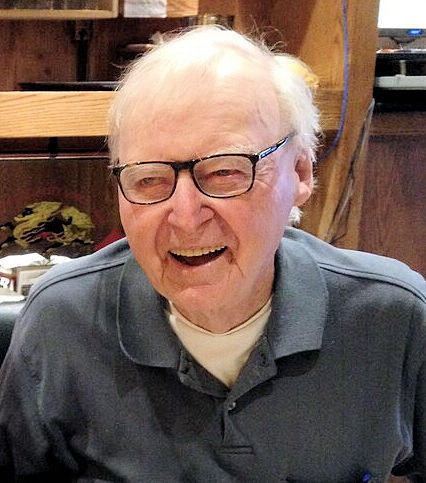
There are probably any number of us out there today, hearing of the death of Mel Morris at the age of 93, thinking that not only has an extraordinary journalist and editor left, but also an influential mentor.
That is certainly the case for me.
I’ve been fortunate to have a number of people in my life who have saved me from myself and provided a gentle, steadying hand. No one provided a gentler or more steadying hand than Mel.
He opened the door for me to sneak into Maclean’s in an era when it was Canada’s most prestigious magazine and something of an iron fortress that few in journalism were allowed to enter. As managing editor there, Mel was a bit of an outlier in that he lacked arrogance and possessed no airs about his position. Tall and bespectacled, with thinning white hair, he was quiet, somewhat shy and self-conscious, and unassuming to a fault. But he carried with him unmistakable authority and a deep knowledge as he simply rolled up his sleeves without a fuss and did the job.
I got to know him at the Toronto Press Club. In those days, depending on your point of view, the place on Richmond Street, above Hy’s Steakhouse, was either the crossroads of Toronto journalism, a great place to network and bond, or a hellhole swallowing up reporters and editors anxious to escape such mundane matters as wives and families.
I haven’t courted many editors but, leaning against the press club bar, I courted Mel. More than anything, I longed for his approval. Every once in a while, I got it. When I didn’t—and if he disliked something you wrote, you certainly knew it—I would want to curl up into a fetal ball and try to forget I ever considered a writer’s life. Still, with Mel watching over, I always felt I was in a safe place, that he would get me through, and I would be fine.
By the time I met him, his remarkable, eclectic career included stints at the Toronto Telegram, the Montreal Gazette as well as at the Toronto Star (a number of times, including a brief stay in the 1980s while I was there). He did not suffer fools, had firm views as to who was and was not a true magazine writer (Margaret Atwood wasn’t, Marci McDonald, who I believe he idolized, was), and, like most of us in those days, could be persuaded every so often to have a drink or two.
Mel’s real strength did not come from any newsroom he inhabited, it was at home with his wife, Shirley. Like everyone else, I adored her. While Mel was quiet and shy, Shirley was magically outgoing, full of life and charm. I used to kid her that she was the love of my life. Well, I was only half kidding. They were together for seventy years. She was with him at the end.
Mel, whatever has happened to me in the years since you more or less took me under your wing, none of it would have happened without you, friend and mentor—the quiet man who made all the difference…

September 21, 2023
No Easy Way to Tell You This: Remembering Stephen Silverman
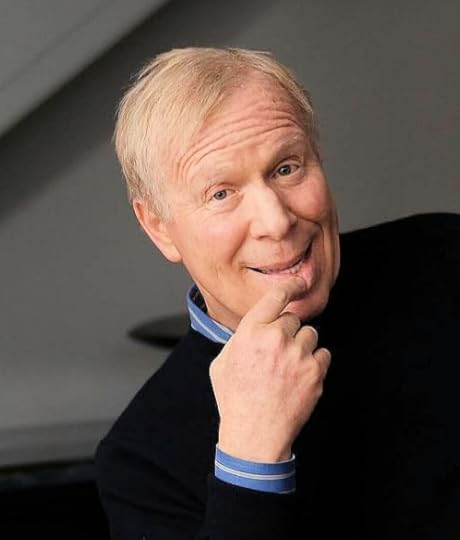
Stephen Silverman’s latest book arrived on my doorstep today. It’s a handsome celebration of the late composer Stephen Sondheim. Sondheim: His Life, His Shows, His Legacy, is an amazing piece of work by an amazing writer—and a good friend.
Of all places, I got to know Stephen at the edge of the Grand Canyon when the two of us, along with a passel of other journalists, were trapped over a weekend with Chevy Chase while he somewhat grimly promoted National Lampoon’s Vacation. Although Stephen and I had nothing to do with it, the movie became a huge summer hit. We became friends.
Thereafter, when we found ourselves together at one of these movie junkets, we made sure to join forces. That way we could be sure, at least in our minds, of getting in a few intelligent queries in the midst of what was often a storm of jaw-dropping dumb questions. We interviewed Roman Polanski at lunch overlooking the Mediterranean during the Cannes Film Festival, flirted outrageously with Barbara Hershey in Los Angeles as she promoted Hannah and her Sisters, and generally had a lot of laughs together.
I liked and admired him immensely, but then who didn’t like Stephen? With his carrot-colored hair, impish, freckled face, he was kind of like Howdy Doody come to life, only more handsome and a whole lot more sophisticated. Highly intelligent, endlessly witty, a bit cynical, and always great fun, Stephen, best of all, was a superb writer. When I met him, he had already published Public Spectacles, his sparkling account of his brushes with celebrity while laboring at the New York Post.
He had befriended film legend David Lean (Lawrence of Arabia, Dr. Zhivago). Charmed, like everyone else, by Stephen, Lean agreed to participate in a biography, the first time the reticent director had done so. Stephen then proceeded to write about subjects as disparate as the turmoil at 20th Century Fox, the director Stanley Donen (Singing in the Rain), and histories of the Catskill Mountains and amusement parks. His smartly written and beautifully produced books, have a special place on my bookshelf.
Although he had been born in California, Stephen, particularly in his later years, always struck me as the quintessential New Yorker. He had an apartment overlooking Lincoln Centre, a camera-ready little dog named Kingston, and lots of glamorous nights filled with Broadway openings and dinners in great New York restaurants with fascinating.
For years, we talked about getting together again in New York. Life somehow kept getting in the way. Finally, I emailed him to say that my wife Kathy and I were coming to the city in October and there was nothing I would like better than to get together with an old dear friend and celebrate the publication of his book.
He didn’t answer the email. Totally unlike Stephen. A couple of weeks went by, me thinking that he must be holed up somewhere doing last-minute work on the Sondheim book.
Still…
Come to think of it, lately he hadn’t posted on Facebook. He had been very good about reporting on Kingston’s latest adventure, or the opening night he had attended, or one of the lectures he often gave.
I decided to check his Facebook page. To my shock and sorrow, I discovered that Stephen had died July 6 at the age of 71, months before I tried to get in touch with him. I felt sick and embarrassed. How could this happen? How could I have missed the death of someone who had seemed so alive and vibrant, who so enjoyed his life. Yet there it was. I had missed it all, including a lengthy New York Times obituary.
Soon I received an answer to my email. It was from Diane Reid, an old friend and the executor of his estate (who also helped him with the Sondheim book). Her note began, “There is no easy way to tell you this…”
No, there isn’t. Her words haunt me still. No easy way to understand how someone like Stephen could have slipped away so quickly. No easy way to understand the tragic irony of achieving a book like Sondheim and then disappear barely two months before its publication.
No easy way to understand any of it, except to sit quietly today, holding tight to Stephen’s book…
Remembering…

September 15, 2023
Remembering the Beer Machine

The week before I arrived at the Eclipse Building in downtown Toronto, they removed the beer machine from the Sun’s newsroom. They must have heard I was coming.
Thanks to that larger-than-life icon of Canadian newspapers and broadcasting, John Bassett, I was hired in 1973 by publisher Doug Creighton (himself a contender in the larger-than-life sweepstakes) and managing editor Don Hunt (large but not larger than life) who had stopped in Windsor on their way to Detroit to look at Sunday newspapers.
I was to write for the city’s first Sunday newspaper, articles for the Sunday Sun’s showcase Toronto Magazine section and also contribute a weekly interview to the new paper’s TV guide.
The enterprise was overseen by a pipe-smoking scarecrow named Phil Sykes. His 2IC was a veteran of the Toronto magazine wars, a Brit named Alan Edmonds, who liked to remind us that he looked like Michael Caine when in fact he looked nothing like Michael Caine.
It is fair to say both men were frantic, driven, dedicated, and completely nuts. My initial reaction, having come from the Windsor Star, one of the best and richest provincial newspapers, was to run for the exits.
I was on my way out when the Sunday Sun’s newest employee, a lovely young woman in a flowered sundress, appeared and was promptly seated at the desk next to mine. I decided to stay and marry this woman. I did not stay at the Sun, but I did marry Lynda.
What saved us all from madness and the magazine from silly tabloid-inspired stories cooked up by Sykes and Edmonds, was its editor, Kathy Brooks.
Cool and calm, the picture of elegance smoking through a long cigarette holder, Kathy had great story ideas, a redeeming sense of humor and a knife-sharp editing pencil. Her sidekick, Carolyn Jackson, had a pencil just as sharp and a gimlet eye when it came to dealing with me. I was so memorable, in fact, that meeting her 40 years later, Carolyn promptly reminded me that I couldn’t spell.
My one enduring contribution to the early days of the Sun was this: encountering managing editor Ed Monteith one day, I suggested in passing that if he was looking for seasoned, talented reporters and editors who could be hired for a song, he needed to look no further than the Windsor Star.
Ed’s eyes immediately lit up. Cheap, talented labour?
The next thing I knew, a stream of Windsor Star reporters and editors began arriving at the Sun, enough so that there were rumours the Star’s managing editor phoned Ed to complain. Too late. The inmates had escaped one asylum and taken over another. A couple of the inmates were so crazy, the Sun eventually made them publishers.
All gentle kidding aside, the Sunday Sun changed my life. I got to Hollywood for the first time, dived under Arctic ice, traveled across the country, drove a Formula One racing car (very badly), and, oh yeah, thanks to George Anthony, the entertainment editor, got drunk with John Wayne. Any newspaper that gets you drunk with John Wayne, that’s a pretty darned good newspaper.
Even better, I met and befriended my journalistic heroes, writers I had grown up reading, admiring and envying. I longed to be one of them. I’m not sure if I ever succeeded, but I certainly rubbed shoulders with the best that Toronto journalism in its wondrous heyday had to offer.
The Sun was the gateway drug that allowed me into a much wider universe –movie critic at the Toronto Star; magazine writing in Canada and the United States; screenplays in Los Angeles, Paris, Montreal, and Rome; and finally, detective novels set in Florida and mystery novels set London’s Savoy Hotel.
Half a century later, looking at a yellowed copy of that first Sunday Sun, thinking back on those chaotic, life-changing, wildly exciting early days, I have only one regret.
I’m sorry I missed the beer machine.
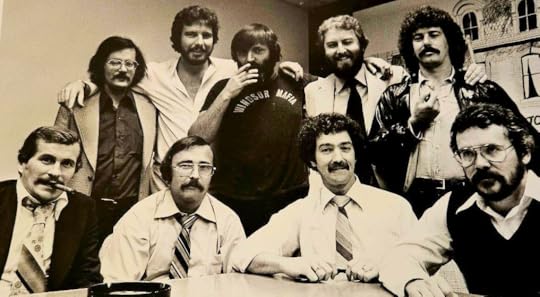 They became known as the Windsor Mafia after they arrived in Toronto. Top from from left: Bruce Blackadar, Ron Base, Brian Vallee, Mark Bonokoski. Bottom, from left: Les Pyette, Cam Norton, Bob Burt, Vic Roschov.
They became known as the Windsor Mafia after they arrived in Toronto. Top from from left: Bruce Blackadar, Ron Base, Brian Vallee, Mark Bonokoski. Bottom, from left: Les Pyette, Cam Norton, Bob Burt, Vic Roschov.
September 7, 2023
I REMEMBER YOU: PETER C. NEWMAN AND ME
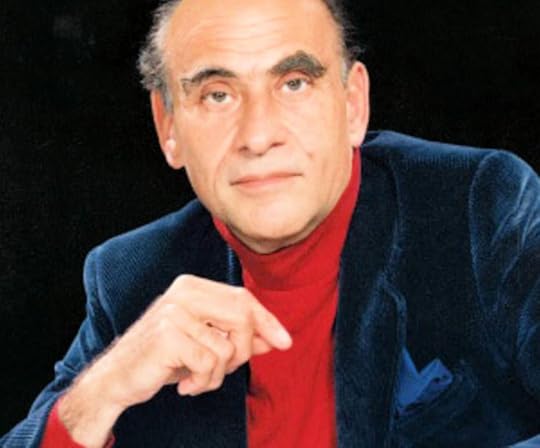
In the course of my often-misguided professional life, I interviewed Peter C. Newman, I worked for Peter C. Newman, I socialized with Peter C. Newman. But in all those years, I never really knew Peter C. Newman and certainly could never figure Peter C. Newman out.
Long, long ago, Peter’s contributions to Canadian journalism were impressive. His nonfiction book, The Canadian Establishment, was groundbreaking. Nobody before had been able to peek behind the curtain of the titans who ran business in this country the way Peter was able to do. Whether he did Maclean’s magazine any favors by reworking a highly regarded monthly totem of journalism into a bi-weekly (and then a weekly) quasi-news magazine is open to question. But there is no doubt Peter transformed it.
The guy who performed these feats as well as at one point running the Toronto Star and writing dozens of bestselling books right up until his death today at the age of 94, was, in my encounters with him at least, a curious, grim, introverted individual. He never quite looked you in the eye and appeared to always wish he was anywhere but where he was.
Watching him in fumbling social interaction at a dinner party he gave, I marvelled all over again at how he ever managed to interview anyone, let alone get inside their world. But somehow, he did, and I was always in awe of that. There was much to admire about Peter; so much to shake your head over.
In the early 1970s I interviewed him and his second wife, Christina McCall, for the Windsor Star. They were known at the time as the power couple of Canadian journalism. A kid who wasn’t much of anything in Canadian journalism, I was nervous as all get out meeting them in Ottawa. They turned out to be friendly and welcoming, Christina particularly. While she was charming and talkative, he was formal and reserved. I thought then that the charm, if not the power of the couple, lay with her, not with him. I was right about the charm, not the about the power.
I’m not sure if it had anything to do with that interview, but much later Peter hired me to write for the newly constituted Maclean’s. I did a lot of pieces for the magazine, but I always had the uneasy sense that he wasn’t all that pleased. Maclean’s in those days was an uneasy place to work anyway, everyone in fear of Peter, including me.
I hadn’t seen Peter for years until I attended a book launch for the late Larry Zolf. I spotted him across the room and thought, well, I’d better go over and say hello. By then he had adopted the trademark Greek fisherman’s cap I would never have imagined the pin-striped, pipe-smoking guy I had first met, ever wearing.
I approached him and held out my hand. “Hello, Peter,” I said. “It’s Ron Base…”
He took my hand, unsmiling, and looked me up and down. “I remember you.” He didn’t sound happy about it.
Gulp…

